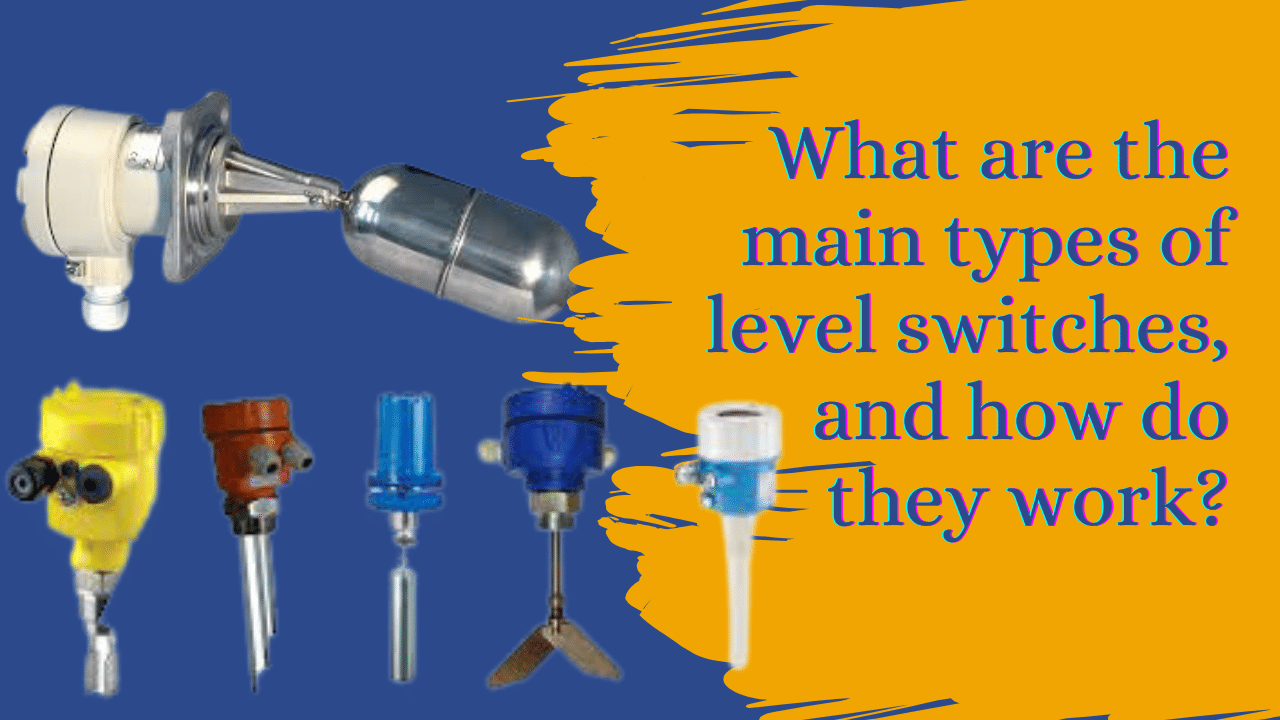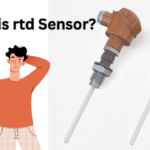Introduction
Level switches play a crucial role in various industries, ensuring the smooth operation of processes that involve liquids, powders, or granular materials. These devices help monitor and control the level of substances in tanks, vessels, and other containers, preventing overflows, shortages, and other operational issues. In this article, we will delve into the world of level switches, exploring their types, applications, working principles, and the advantages they offer to different industries.
Understanding Level Switches
Level switches, also known as liquid level sensors or level sensors, are devices designed to detect and monitor the level of a substance within a container. They are essential in industries such as manufacturing, chemical processing, agriculture, and wastewater treatment. Level switches come in various types, each tailored to specific applications and environmental conditions.
Types of Level Switches
Float Level Switches:
- These switches use a buoyant float that rises or falls with the liquid level. When the float reaches a predefined level, it triggers a switch, initiating an action or an alarm.
- Commonly used in sump pumps, aquariums, and industrial tanks.
Capacitance Level Switches:
- Capacitance level switches use variations in electrical capacitance to detect changes in the level of a substance.
- Ideal for detecting both conductive and non-conductive liquids, they find applications in food processing, pharmaceuticals, and chemical industries.
Ultrasonic Level Switches:
- Ultrasonic level switches use sound waves to determine the distance between the sensor and the substance’s surface. When the substance reaches a certain level, the switch is activated.
- Widely used in water treatment, agriculture, and the petrochemical industry.
Vibrating Level Switches:
- These switches rely on the vibrations of a tuning fork or a probe. When the liquid level reaches the probe, it dampens the vibrations, triggering the switch.
- Commonly found in food and beverage production and wastewater treatment.
Optical Level Switches:
- Optical level switches use infrared or visible light to detect changes in liquid levels. When the light beam is interrupted, the switch is activated.
- Applications include the semiconductor industry and medical equipment.
Working Principles of Level Switches
Level switches operate on different principles, depending on their type. Let’s take a closer look at the working principles of the most common types:
Float Level Switches:
- As the liquid level rises or falls, it causes the float to move accordingly.
- When the float reaches the predetermined level, it either closes or opens an electrical circuit, activating the switch.
Capacitance Level Switches:
- These switches have a probe or sensor with a capacitor.
- The capacitance changes as the liquid level rises or falls.
- When the capacitance crosses a set threshold, the switch triggers.
Ultrasonic Level Switches:
- Ultrasonic level switches emit high-frequency sound waves.
- The waves bounce off the liquid surface and return to the sensor.
- When the liquid level reaches the sensor, it disrupts the wave pattern, causing the switch to activate.
Vibrating Level Switches:
- Vibrating level switches have a tuning fork or probe that vibrates at a specific frequency.
- When the liquid level reaches the probe, it dampens the vibrations, changing the electrical properties of the probe and activating the switch.
Optical Level Switches:
- These switches use a light emitter and a receiver.
- When the liquid level interrupts the light beam between the emitter and receiver, the switch triggers.
Level Switch Mounting or Installation
The mounting of a level switch is a critical step in ensuring its accurate and reliable operation. Proper mounting is essential to ensure that the switch functions correctly and provides accurate level measurements. The mounting method can vary depending on the type of level switch and the specific application, but there are some general guidelines to follow:

Mounting Location: Choose an appropriate location for mounting the level switch. It should be positioned at a point where you want to monitor the level of the substance within the container. Consider factors such as accessibility, safety, and the need to prevent interference with other equipment or structures.
Orientation: Ensure that the level switch is correctly oriented. Some level switches are designed to be mounted vertically, while others can be mounted horizontally. Check the manufacturer’s instructions for the recommended orientation.
Mounting Bracket or Flange: Depending on the design of the level switch, you may need a mounting bracket, flange, or other suitable hardware to secure it in place. These accessories provide stability and ensure that the switch remains in the desired position.
Gasket or Seal: In applications where a watertight or airtight seal is required, use an appropriate gasket or seal between the level switch and the container. This helps prevent leaks or environmental contamination.
Proper Depth: Ensure that the level switch is mounted at the correct depth within the container. The depth should be set according to the desired level at which you want the switch to activate or deactivate. Most level switches allow you to adjust this depth to meet your specific requirements.
Avoid Obstructions: Ensure that there are no obstructions or obstacles in the vicinity of the level switch that could interfere with its operation. This includes ensuring that the switch’s sensing element or probe has a clear path to the substance being monitored.
Wiring and Electrical Connections: If the level switch is electrically powered or includes electrical components, make sure to properly route and secure the wiring. Ensure that electrical connections are tight and protected from moisture or environmental factors.
Calibration: After mounting the level switch, it’s essential to calibrate it according to the manufacturer’s instructions. Calibration ensures that the switch accurately responds to changes in the substance’s level and triggers the desired actions or alarms.
Regular Inspection: Periodically inspect the level switch and its mounting to ensure that it remains in good condition. Check for signs of wear, damage, or corrosion, and address any issues promptly to maintain the switch’s reliability.
Safety Considerations: Always follow safety protocols when mounting level switches in potentially hazardous environments or with hazardous substances. Use appropriate personal protective equipment and follow industry-specific safety guidelines.
The specific mounting procedure may vary depending on the type and model of the level switch, so it’s crucial to refer to the manufacturer’s installation instructions and guidelines for your particular device. Proper mounting is essential to maximize the performance and longevity of the level switch and to ensure accurate monitoring of substance levels in industrial processes.
Applications of Level Switches
Level switches find applications across various industries due to their versatility and reliability. Some notable applications include:
Chemical Processing:
- Level switches are crucial in maintaining the proper levels of chemicals in storage tanks and reactors, preventing spills and ensuring safe operations.
Food and Beverage Production:
- These switches help control ingredient levels and monitor storage tanks in the food and beverage industry, ensuring product quality and consistency.
Water Treatment:
- Level switches are used to monitor water levels in reservoirs, sewage treatment plants, and pump stations, facilitating efficient water management.
Oil and Gas:
- In the oil and gas sector, level switches are employed in oil wells, pipelines, and storage tanks to prevent leaks and overflows.
Pharmaceuticals:
- Level switches ensure precise control of liquid levels in pharmaceutical manufacturing processes, guaranteeing product quality and safety.
Agriculture:
- Agriculture relies on level switches to monitor water levels in irrigation systems, preventing overwatering or drought conditions.
Wastewater Treatment:
- Level switches are essential in wastewater treatment facilities to manage sewage and effluent levels effectively.
Advantages of Using Level Switches
The use of level switches offers several advantages to industries and processes:
Safety: Level switches help prevent spills, leaks, and overflows, minimizing the risk of accidents and environmental damage.
Process Efficiency: By maintaining precise levels of liquids or materials, level switches contribute to efficient production processes and resource management.
Cost Savings: These devices can reduce wastage and energy consumption, leading to cost savings in various industries.
Reliability: Level switches are known for their durability and consistent performance, even in harsh environmental conditions.
Automation: Integrating level switches into control systems enables automation, reducing the need for manual monitoring and intervention.
Challenges and Considerations
While level switches offer numerous benefits, there are also challenges to consider:
Compatibility: Choosing the right type of level switch for a specific application is crucial to ensure compatibility with the substance being monitored.
Maintenance: Periodic maintenance and calibration are necessary to ensure accurate and reliable performance.
Environmental Conditions: Extreme temperatures, corrosive substances, and other harsh conditions can affect the longevity and performance of level switches.
Installation: Proper installation is essential to ensure that the switch functions correctly and accurately.
Conclusion
Level switches are indispensable devices in various industries, enabling efficient and safe liquid and material level monitoring. With their diverse types and working principles, level switches offer solutions for a wide range of applications, from chemical processing to food production and wastewater treatment. By understanding their operation and advantages, industries can make informed decisions when selecting level switches to enhance their processes, reduce costs, and improve safety. Whether it’s preventing spills in a chemical plant or maintaining water levels in agricultural irrigation, level switches play a crucial role in optimizing operations and ensuring the smooth flow of industrial processes.








